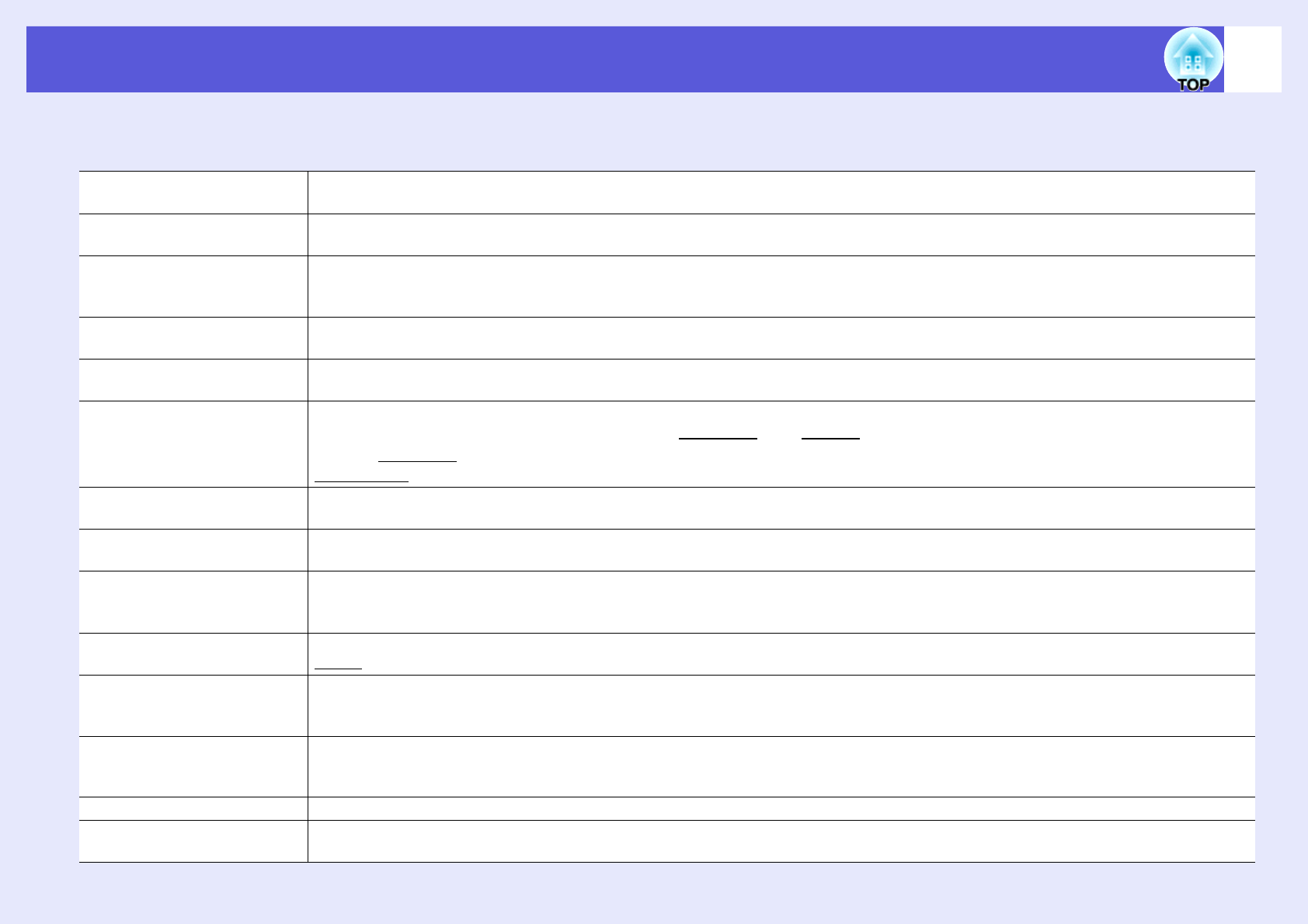
98
Glossary
This section briefly explains terms that are used with the projector and difficult terms that are not explained in the text of this guide. For details,
refer to other commercially available publications.
Aspect ratio The width-to-height ratio of a projected image or screen. When the width-to-height ratio is 16:9 or 16:10, the elongated screen is known
as wide-screen. The aspect ratio for standard images is 4:3.
Component Video A video signal which has the luminance component and color component separated to provide better image quality.
Refers to images that consist of three independent signals: Y (luminance signal), Pb and Pr (color difference signals).
Composite video Video signals that have the video brightness signals and color signals mixed together. The type of signals commonly used by household
video equipment (NTSC, PAL, and SECAM formats). The carrier signal Y (luminance signal) and chroma (color) signal that are
contained in the color bar are overlapped to form a single signal.
Contrast The relative brightness of the light and dark areas of an image can be increased or decreased to make text and graphics stand out more
clearly, or to make them appear softer. Adjusting this particular property of an image is called "contrast adjustment".
Dolby Digital A sound format developed by Dolby Laboratories. Normal stereo is a 2-channel format that uses two speakers. Dolby Digital is a 6-
channel (5.1-channel) system which adds to this a center speaker, two rear speakers, and a sub-woofer.
HDTV An abbreviation for High-Definition Television that refers to high-definition systems which satisfy the following conditions.
• Vertical resolution of 720p or 1080i or greater (p = progressive
g, i = interlaceg)
• Screen aspect ratio
g of 16:9
Dolby Digital
g audio reception and playback (or output)
Interlace A method of image scanning whereby the image data is divided into fine horizontal lines that are displayed in sequence starting from left
to right and then from top to bottom. The even-numbered lines and odd-numbered lines are displayed alternately.
Progressive A method of image scanning whereby the image data from a single image is scanned sequentially from top to bottom to create a single
image.
Refresh rate The light-emitting element of a display maintains the same luminosity and color for an extremely short time. Because of this, the image
must be scanned many times per second to refresh the light-emitting element. The number of refresh operations per second is called the
Refresh rate and is expressed in hertz (Hz).
SDTV An abbreviation for Standard Definition Television that refers to standard television systems which do not satisfy the conditions for
HDTV
g High-Definition Television.
Squeeze mode In this mode, wide-screen images in 16:9 mode are compressed in the horizontal direction so that they are stored on the recording
medium as 4:3 images.
When these images are played back by the projector in squeeze mode, they are restored to their original 16:9 format.
sRGB An international standard for color intervals that was formulated so that colors that are reproduced by video equipment can be handled
easily by computer operating systems (OS) and the Internet. If the connected source has an sRGB mode, set both the projector and the
connected signal source to sRGB.
SVGA A type of video signal with a resolution of 800 (horizontal) ^ 600 (vertical) dots that is used by IBM PC/AT-compatible computers.
S-Video A video signal which has the luminance component and color component separated to provide better image quality.
Refers to images that consist of two independent signals: Y (luminance signal) and C (color signal).


















